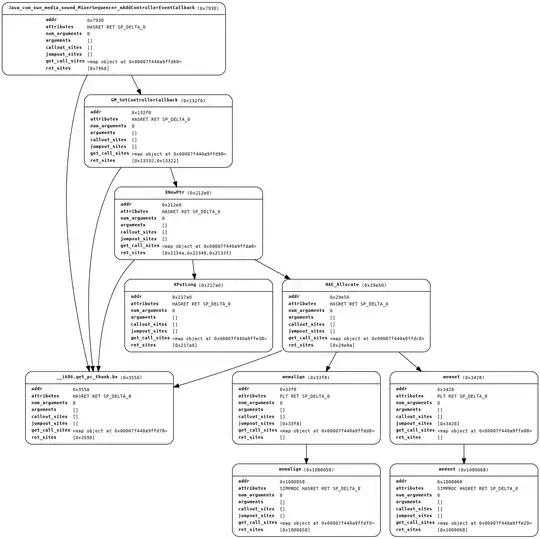You can use radare2 or one of the alternatives below to generate a full call-graph in dot format.
radare2 Installation
First of all, install radare2 from git repository:
$ git clone https://github.com/radare/radare2.git
$ cd radare2
$ ./sys/install.sh
Analysis
After you've downloaded and installed radare2, open your binary and perform analysis on it using the aaa command:
$ r2 /bin/ls
[0x004049a0]> aaa
[x] Analyze all flags starting with sym. and entry0 (aa)
[x] Analyze function calls (aac)
[x] Analyze len bytes of instructions for references (aar)
[x] Constructing a function name for fcn.* and sym.func.* functions (aan)
[x] Type matching analysis for all functions (afta)
[x] Use -AA or aaaa to perform additional experimental analysis.
Output visual graph
The ag command and subcommands can help you to output the visual graph into Graphviz format.
[0x00000000]> ag?
Usage: ag<graphtype><format> [addr]
Graph commands:
| aga[format] Data references graph
| agA[format] Global data references graph
| agc[format] Function callgraph
| agC[format] Global callgraph
| agd[format] [fcn addr] Diff graph
| agf[format] Basic blocks function graph
| agi[format] Imports graph
| agr[format] References graph
| agR[format] Global references graph
| agx[format] Cross references graph
| agg[format] Custom graph
| ag- Clear the custom graph
| agn[?] title body Add a node to the custom graph
| age[?] title1 title2 Add an edge to the custom graph
Output formats:
| <blank> Ascii art
| * r2 commands
| d Graphviz dot
... <truncated> ...
| w [path] Write to path or display graph image (see graph.gv.format and graph.web)
You're searching for the agCd command. The C specifies to output a full ("global") call-graph of the program. The d specifies to output in Graphviz dot format.
[0x004049a0]> agCd > output.dot
The dot utility is part of the Graphviz software which can be installed using sudo apt-get install graphviz.
You can view your output in any offline dot viewer, paste the output into an online Graphviz viewer and even convert the dot file to PNG:
$ r2 /bin/ls
[0x004049a0]> aa
[x] Analyze all flags starting with sym. and entry0 (aa)
[0x004049a0]> agCd > output.dot
[0x004049a0]> !!dot -Tpng -o callgraph.png output.dot
To read more about radare2 it is recommended to read radare2 book.
Alternatives
gen-callgraph - gen-callgraph is a script to generate call graph from elf binary
IDA Pro - generate GDL (Graph Description File) call graph using CTRL+F12, save it and then convert it to dot file with one of the following options:
The free version of IDA is also capable of generate GDL of call graph but it is only available as exe, use wine on Linux to run it

ilto get libraries used by the binary orrabin2 -l /bin/lswhich is the same – Megabeets Aug 15 '17 at 18:43